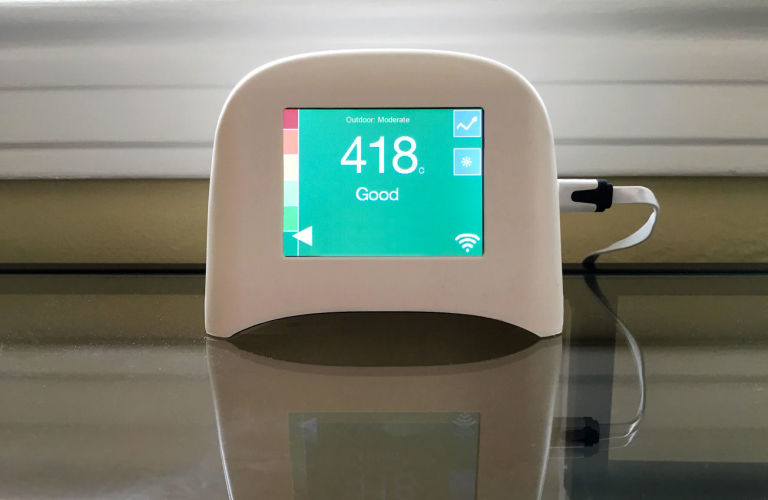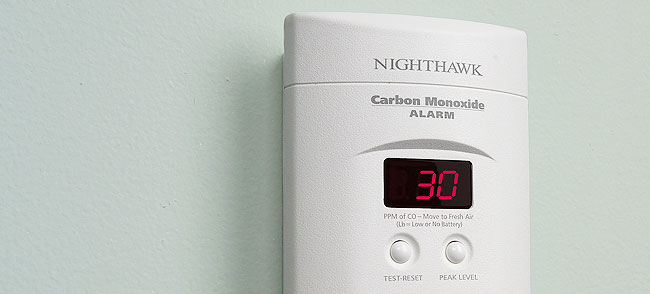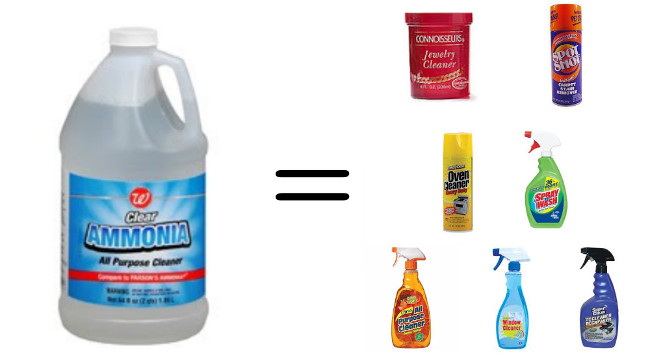Simple way to measure air quality in your home
There are many factors that can affect the air quality in your home. Because of the health and safety of every family member, you need to check the air quality in your home. The rule of thumb is that the higher the concentration of indoor air pollution, the higher the risk of health problems .
 Simple way to measure air quality in your home Picture 1 Air quality measuring device.
Simple way to measure air quality in your home Picture 1 Air quality measuring device.
Contamination of the air in your home can come from harmful gases in the air or from mold growth . Mold and frost mold can grow everywhere - on furniture, materials, wet mats, in heating systems and cooling systems as well as in many other places. These mold germs are very harmful to health. There are also harmful gases that can even be more dangerous. The two most common gases in our home are radon and carbon monoxide.
Here are a few ways to check the air quality we are breathing.
Carbon Monoxide (carbon monoxide): is a colorless, odorless, flammable and highly toxic gas, the product of incomplete combustion of burning fuels in household appliances such as stoves. , furnaces, water heaters and heaters. Carbon monoxide can enter the lungs, inhibiting oxygen transport to the body. Exposure to carbon monoxide for a long time can lead to death. The only way to detect this carbon monoxide is to install a carbon monoxide detector in your home. It works like a smoke sensor, which will alert you when the level of carbon monoxide increases too much.
 Simple way to measure air quality in your home Picture 2
Simple way to measure air quality in your home Picture 2
CO discovery system.
Radon gas (radon) : is a colorless, odorless, tasteless gas that is naturally radioactive from the soil and enters your home through dirt on the floor, cracks in the walls and in the basement as well as drainage systems. It is thought to be the main cause of lung cancer. The simple way to check the amount of radon in your home is to buy tests to measure the level of radon in your home. Leave the test kit in the house at the lowest place for 2-7 days, then send it to the laboratory for measurement.
 Simple way to measure air quality in your home Picture 3
Simple way to measure air quality in your home Picture 3
The kit test measures the concentration of radon in the home.
Biological contaminants : mold, moisture, bacteria, viruses and pollen are all biological contaminants. Mold and mildew grow in humid conditions, which are caused by high humidity, water pipe leakage and steam condensation. Visual inspections and odors are the only way to detect biological contaminants. When mold and mildew are found, you must clean those areas with ammonia solution or some similar detergent to kill pathogens.
 Simple way to measure air quality in your home Picture 4
Simple way to measure air quality in your home Picture 4
Detergents.
You should read it
- 7 simple ways to reduce air pollution in your home
- Air quality index - What is AQI?
- 14 simple tips to help clean the house and welcome Tet
- 3 easy steps to clean the mattress bed properly
- See the air pollution index using BreezoMeter application
- Beautiful indoor tree decoration
- Items that can protect your health from air pollution
- This AI system can predict air pollution before it actually happens
- 9 great home cleaning techniques save time
- Top of the best versatile mops for sisters
- Advanced anti-pollution mask launched in India
- How to clean the phone and other electronic devices
May be interested

Explore the world's deepest underwater caves in the Czech Republic

11 famous inventions and inventions of Vietnamese people made the world admire

Science proves: Children inherit intelligence from their mother, not from their father

Explain the cause of an electric shock when you bend your elbow on the table

Top 10 fastest growing industries in 2016

Why do you always feel the way back is shorter than the road?






 How to measure bra size at home
How to measure bra size at home How to Measure TV Size
How to Measure TV Size 7 simple ways to reduce air pollution in your home
7 simple ways to reduce air pollution in your home Instructions on how to measure heart rate at home
Instructions on how to measure heart rate at home Please download Google's Measure app, which supports all Android-compatible ARCore smartphones
Please download Google's Measure app, which supports all Android-compatible ARCore smartphones Instructions on how to measure blood pressure at home
Instructions on how to measure blood pressure at home